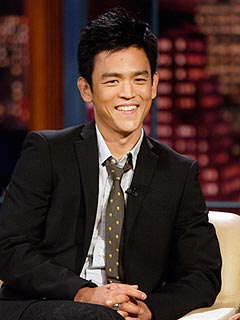Fugitive former police officer Christopher Jordan Dorner was apparently holed up inside a Big Bear area condo for as many as five days before the husband and wife who own the property surprised him and then were tied up and gagged, the couple said Wednesday night.
Dorner bound the husband's and wife's hands with plastic zip ties, stuffed small towels in their mouths so they couldn't scream and covered their heads with pillowcases that he tied with electrical cords, they said.
"I really thought it could be the end," Karen Reynolds, 56, told reporters gathered outside her condominium.
She and husband Jim Reynolds, 66, provided new details on some of Dorner's movements in the apparent final hours of his life. He is believed to have died Tuesday in a cabin fire after a mountainside gun battle with officers.
Law enforcement authorities previously said Dorner had held two cleaning women hostage. The Reynoldses spoke to reporters to end the confusion.
The couple said Dorner had been at the condo in the 1200 block of Club View Drive since as early as Friday, when they arrived to do maintenance in the yard. He told them he watched them — and even said they were "hardworking, good people." The couple slept at another property nearby.
When they entered the condo about noon Tuesday, the couple said, they were surprised to find the fired Los Angeles police officer inside the home, which is near the command post where authorities provided media briefings. They said they were held captive for about 15 minutes by Dorner, whom they recognized immediately.
The Reynoldses stumbled on the suspected killer when they went upstairs. Once they saw him, they said, he brandished a "big gun" and yelled, "Stay calm!"
Karen Reynolds said she tried to run down the stairs, but Dorner chased after her and caught her. He then took the couple to a bedroom, where he tied them up.
Dorner was a menacing presence but at other times tried to reassure the couple that he did not want to harm them, they said.
"He tried to calm us down, saying very frequently, he would not kill us," said Jim Reynolds, who has owned the condo with his wife for 12 years. "He huddled down beside me and said, 'You're going to be quiet right? Not make a fuss and let me get away?' "
Dorner identified himself as the man wanted by law enforcement authorities. "I know you know who I am, I know you've been seeing the news," Karen Reynolds recalled him saying.
Karen Reynolds said Dorner left the condo and stole their purple Nissan. About two minutes after they heard the car leave, Karen Reynolds propped herself up and shuffled to her cellphone. She grabbed it with her bound hands and called 911, using the speaker function.
"Dorner tied us up and he's in Big Bear," she recalled telling the dispatcher.
The couple, who have been married for 36 years, said they were "happy to be alive." They said they had mixed feelings about Dorner, whom they described as calm, alert and methodical. Karen Reynolds said she wasn't expecting to see any of the $1-million-plus reward money offered in the Dorner case. "We heard nobody was getting that because he needed to be captured and convicted," she said.
They said they found evidence that someone had been staying in the cabin, including a gallon of milk in the fridge, but that they didn't know if a previous tenant had left it behind. The last guests were there on Jan. 29.
All of the units are equipped with cable television and Internet. There was no sign of a forced entry.
It was Karen Reynolds' 12:20 p.m. 911 call that set in motion the chain of events that led to a shootout between Dorner and a state Fish and Wildlife warden, then to the standoff at another cabin where he is believed to have exchanged hundreds of rounds in the gun battle with officers before dying.
As the couple described their harrowing ordeal, they recalled that Dorner was insistent about what he wanted to do.
"I don't have a problem with you," he told them. "I just want to clear my name."
adolfo.flores@latimes.com
robert.lopez@latimes.com
Flores reported from Big Bear, Lopez from Los Angeles. Times staff writers Andrew Blankstein and Rong-Gong Lin II contributed to this report.












